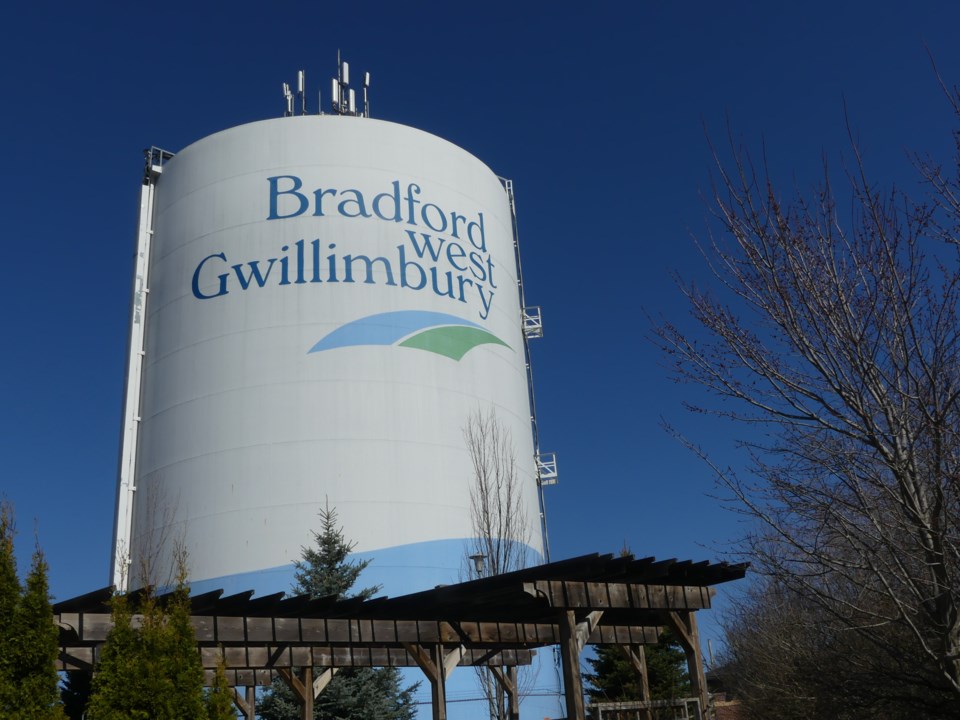There’s an imbalance between the amount of water servicing available for new development in Bradford, and the number of wastewater units still available within the wastewater treatment plant.
There are 7,690 water units available for new development outside of the Early Prepayment Agreement 3 subdivisions, plus another 1,659 units already committed through EPA3 – an overall total of 9,349 water units available for new development, as of Dec. 31, 2019.
Unfortunately, there are only 3,368.33 units of wastewater servicing available for non-EPA3 development, plus 1,068 units committed to EPA3 subdivisions, for a total of 4,436 units – less than half the available water servicing.
The imbalance could pose a bar to continued development in the municipality – but engineering has come up with a solution, to help realign the water and wastewater units available while delaying two major capital projects.
In the current economic environment, the town wants to delay the planned twinning of the watermain that runs from the Lakeshore Water treatment plant in Innisfil to the Fennell Reservoir serving Bradford - as well as the planned multi-million-dollar expansion of the wastewater treatment plant.
A six-page report from Development and Engineering Services presented to council on May 19 provides an outline of steps to both secure the water supply, and increase capacity at the wastewater treatment plant.
The report notes that there is a risk to delaying the twinning of the watermain. As Mahesh Ramdeo, Manager of Capital Projects pointed out, “The main risk of the deferral is the possible interruption to that single feed.”
To reduce the risk, the engineering department has suggested optimizing the capacity of existing infrastructure through a number of projects – including emergency backup power at the town’s wells, refurbishment of the standpipe on Noble Drive, and a study that will ensure the system is in good repair.
As for wastewater treatment plant capacity, the report suggests that the biggest issue impacting the number of units available is the infiltration of rainwater into the sewer system.
“We estimate that 34 percent of everything that goes into the plant is actually rainwater, so we need to stop that,” said Ramdeo. Staff are also proposing repairs and upgrades to optimize the operation of the wastewater treatment plant, to further boost capacity.
He acknowledged that even with all of the recommended actions, “our forecast is that it wouldn’t exactly catch up.” Wastewater capacity could only achieve a maximum of “85.95 percent of water capacity,” without expanding the treatment plant.
Councillors were shocked by the high rate of infiltration identified by Engineering.
“We build brand new subdivisions,” said Deputy Mayor James Leduc, demanding “why?” the infiltration of rainwater is so high.
Ramdeo confirmed that the older urban areas of Bradford “do contribute quite a bit to infiltration,” but identified a need to hire a consultant to look at the entire urban area, “just to confirm that we have good subdivisions,” and there are no problems that were missed.
“We’ve been looking for infiltration for over 30 years,” said Coun. Gary Lamb. “Quite a number of homes that were built in the ‘70s or ‘80s, the eavestroughs ran right into the drains.”
In other cases, sump pumps were hooked up to the sanitary sewer system, Lamb said. “I’m not surprised by the amount of infiltration.”
He suggested, “Hopefully, this time if we do it, we can find the critical points.”
“We are treating too much rainwater, there’s no doubt about it,” said Coun. Peter Dykie, suggesting that when the town begins reconstruction of Holland Street, the situation will be improved by replacing “a lot of old pipes.”
Leduc still questioned the figures, as well as plans for the consultant to investigate newer subdivisions for possible points of infiltration.
“Why are we doing the new subdivisions?” he demanded. “They should have been inspected and ensured. To me, 34 percent – that’s ridiculous.”
Mayor Rob Keffer wrapped up discussion, noting, “Hopefully, we can figure out and nail down how much capacity we do have.”
The cost of the work proposed would come out of the existing budgets for the twinned transmission main, and the Water Pollution Control Plant expansion, both of which could then be deferred to 2031.
Council voted to receive the report, endorse the updated allocation numbers, and ask staff to come back with detailed and comprehensive plans to ensure the security of the water supply and upgrade the Water Pollution Control Plant.



